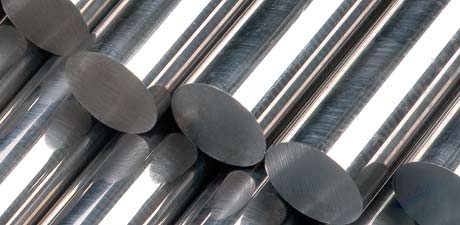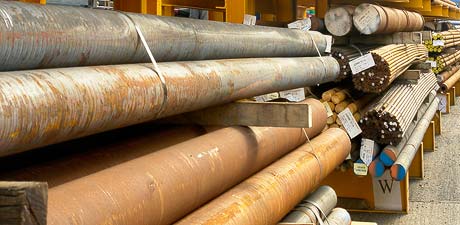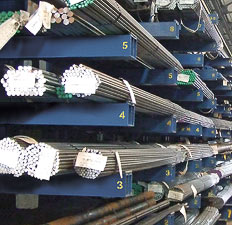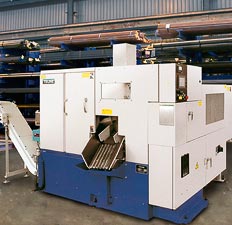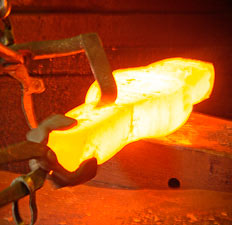Technical Data
Metallurgical Terms
Refractories.
Heat-resisting materials, usually consisting of metallic oxides, used for furnace linings. The principal acid refractory is silica; basic refractories are magnesite and dolomite. Chromite (often in association with magnesite) and fireclay are also widely used.
Regenerative Furnace.
This consists of two pairs of chambers (regenerators), one for gas and one for air in each pair, each filled with a checkerwork of refractory bricks. The function of the checkerwork is to absorb heat from the hot waste gases as they pass through on their way from the furnace to the chimney. When the checkerwork of one pair of chambers is hot, the flow of the heated gases is reversed, to pass through the other pair of cool chambers, whilst the hot checkerwork gives up its heat to the incoming air and producer gas on their way to the furnace. (See Recuperator).
Regenerators.
(See Regenerative Furnace).
Residual Stress.
The stress which exists in an elastic solid body in the absence of, or in addition to, the stresses caused by an external load. Such residual stress may be brought about by (1) deformation, caused by cold-working, as in drawing or stamping; (2) change in the specific volume due to thermal expansion, a phase change, or magnetostriction, or (3) by the joining together of structural parts by force.
Reverberatory Furnace.
A furnace in which the ore or metal is exposed to the action of flame deflected or reverberated, from a sloping roof above the hearth. The fuel is burned on a separate hearth out of contact with the charge.
Rh.
Chemical symbol for rhodium.
Riser.
An opening in the top of a mould. It acts as a reservoir of molten metal which prevents the formation of cavities in the casting as it contracts on solidification. Secondly, it allows gases to escape as the molten metal rises in the mould and thirdly, it indicates to the moulder when the mould is full. On removal of the mould, the riser forms a projection on the casting from which it is finally cut away.
Roaks.
(See Rokes).
Rockwell Hardness Tester.
Rockwell hardness numbers are based on the additional depth to which an indenter is driven into a metal by heavy load beyond the depth to which the same indenter has been driven by a light load, the conditions under which this happens being arbitrary but definite. For the inspection of hard steel parts the sphero-conical diamond Brale penetrator is used with a major load of 150 kg. The number indicated on the black scale of the dial is observed and is prefixed by the letter C, e.g., C-62. For testing softer metal, the penetrator employed may be a 1⁄16in. diameter steel ball with the other standard load, 100 kg. The readings are then taken from the red calibration on the dial and the prefix is the letter B, e.g., B-68. Tests can also be made with other load penetrator combinations, for example, a 60 kg. major load with a Brale penetrator is used for the “A” scale.
Rokes (Roaks).
Defects on the exterior of bars. They consist of fissures which have become elongated in the direction of working, but have been only partially closed up during rolling, their surfaces being separated by a thin film of scale. They originate from blow-holes, formed immediately below the surface of the ingot, which have been broken down during forging or rolling and become oxidized or decarburized. The term should be restricted to isolated deep seams. (Cƒ. Seams).
Roll Cogging.
The rolling down of ingots in a cogging mill.
Rolling.
(a) The process of shaping steel by passing it between two rolls revolving at the same peripheral speed and in opposite directions.
(b) The preparation of a cylindrical forging by rounding stock between swaging tools prior to the drop forging operation.
(c) An operation similar to tumbling, in that the metal parts and abrasives are loaded in a barrel or similar mechanism, but differing in that the work and abrasives are rolled in such a way that the load rolls over and over upon itself in a continuous flowing motion in relation to the rotating barrel. Such rolling removes flash, rough spots and scale, and cuts down a metal surface to an even and uniform condition.
Rotary Furnace.
A furnace having a hearth, circular in plan view, which is slowly rotated, the walls and roof being stationary. The workpieces are charged through a door onto the hearth and are carried round for one revolution during which they pass various burners adjusted to complete the required temperature cycle.
Roughing.
(See Cogging).
Ru.
Chemical symbol for ruthenium.
Runner.
A channel through which molten metal or slag is passed from one receptacle to another. In a casting mould, that portion of the gate assembly which connects the downgate or sprue with the casting. The term is also applied to the metal which has frozen in such a channel.
- < Previous
- 1
- 2


